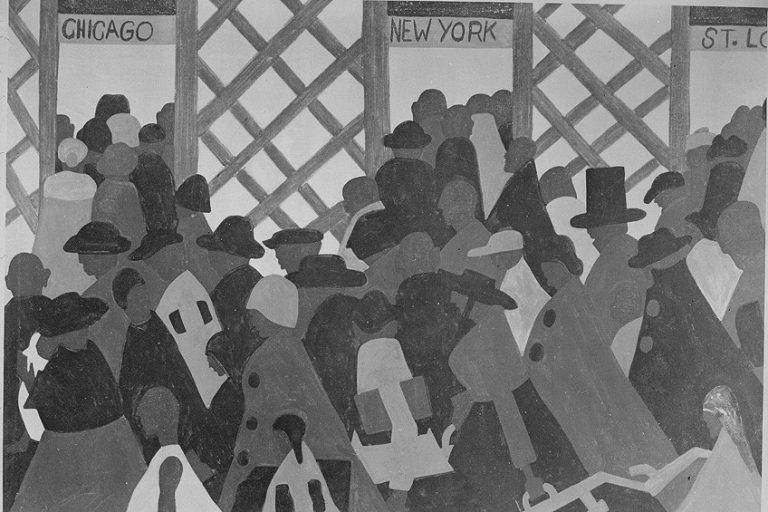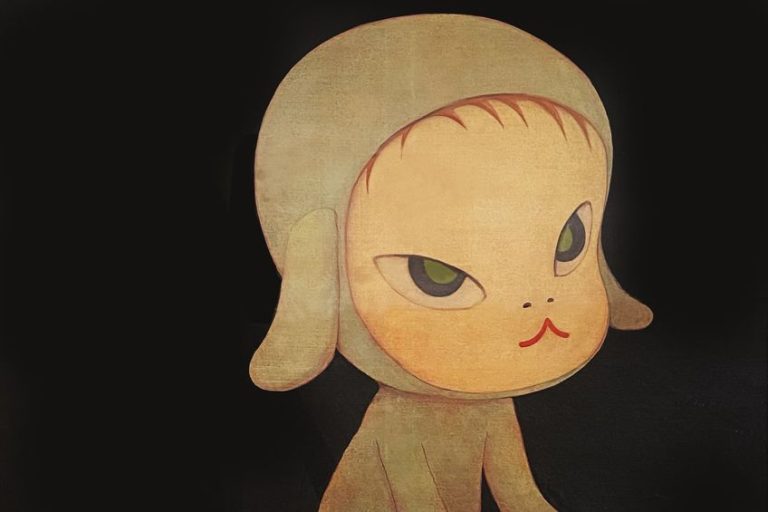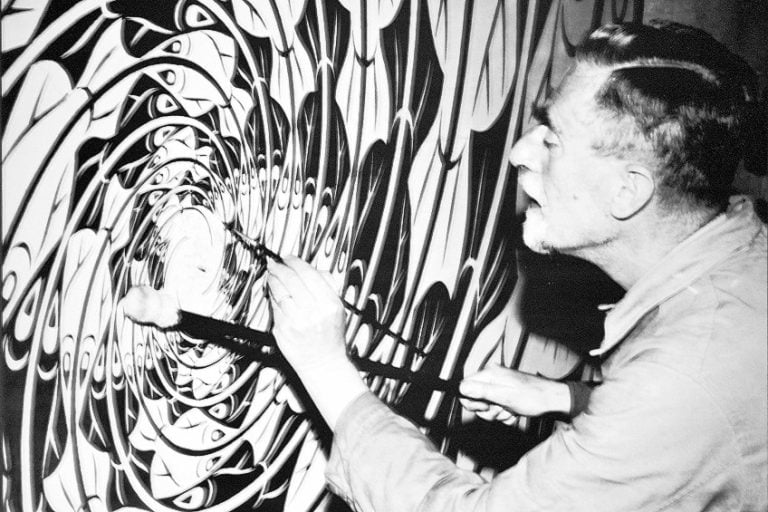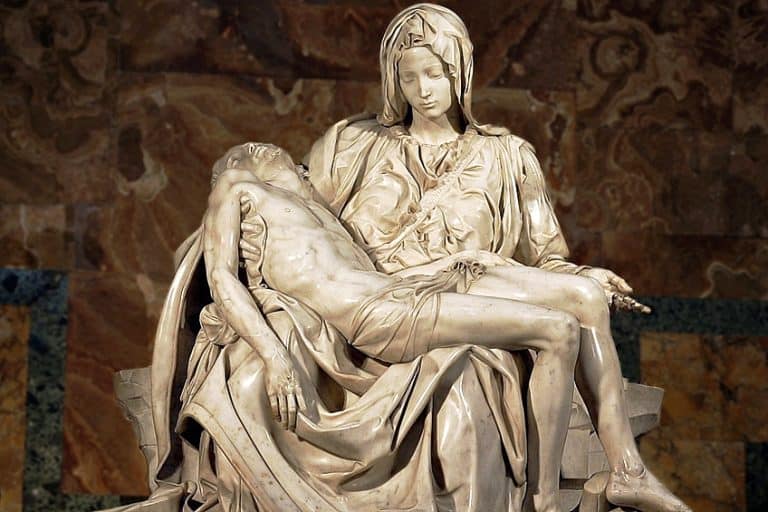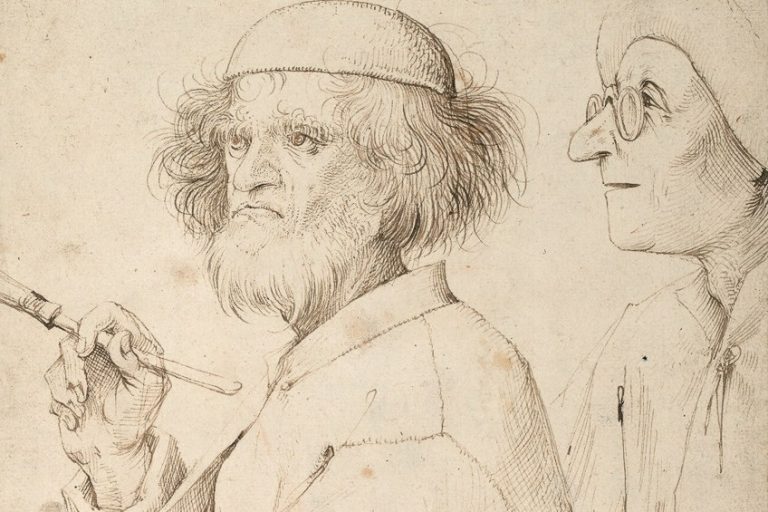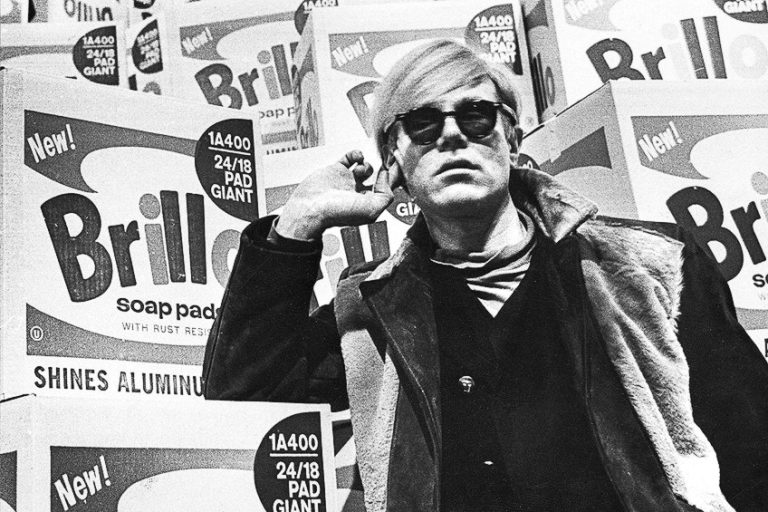Mixed Media Artists – A Testament to Boundless Creativity
In the vibrant realm of contemporary art, mixed media artists stand at the forefront of creative innovation, weaving together diverse elements to forge captivating visual narratives. Among the myriad expressions within this dynamic field, mixed media collage artists emerge as pioneers, skillfully blending various mediums to craft intricate and thought-provoking compositions. These visionary creators defy artistic conventions, harnessing the power of juxtaposition to elevate their work into a realm where texture, color, and form converge in harmonious complexity. In this exploration of the enchanting world of mixed media artists, we delve into the techniques and inspirations driving these artisans to redefine the boundaries of artistic expression, one compelling collage at a time.
Table of Contents
- 1 Unveiling the Layers: Exploring the Essence of Mixed Media Art
- 1.1 Pablo Picasso (1881 – 1973)
- 1.2 Georges Braque (1882 – 1963)
- 1.3 Joseph Cornell (1903 – 1972)
- 1.4 Anselm Kiefer (1945 – Present)
- 1.5 Penny Siopis (1953 – Present)
- 1.6 William Kentridge (1955 – Present)
- 1.7 Susan Goethel Campbel (1956 – Present)
- 1.8 Won Ju Lim (1968 – Present)
- 1.9 Senzeni Marasela (1977 – Present)
- 1.10 Njideka Akunyili Crosby (1983 – Present)
- 2 Frequently Asked Questions
Unveiling the Layers: Exploring the Essence of Mixed Media Art
In the vast landscape of artistic expression, mixed media art stands as a testament to boundless creativity, where traditional boundaries dissolve, and innovative amalgamations come to life. At its core, mixed media art involves the strategic combination of diverse materials and techniques, transcending the limitations of a single medium. Unlike its counterpart, multimedia art, which incorporates elements like video, audio, and interactive components, mixed media embraces the tactile and visual richness derived from the layering of paints, paper, fabric, found objects, and more.
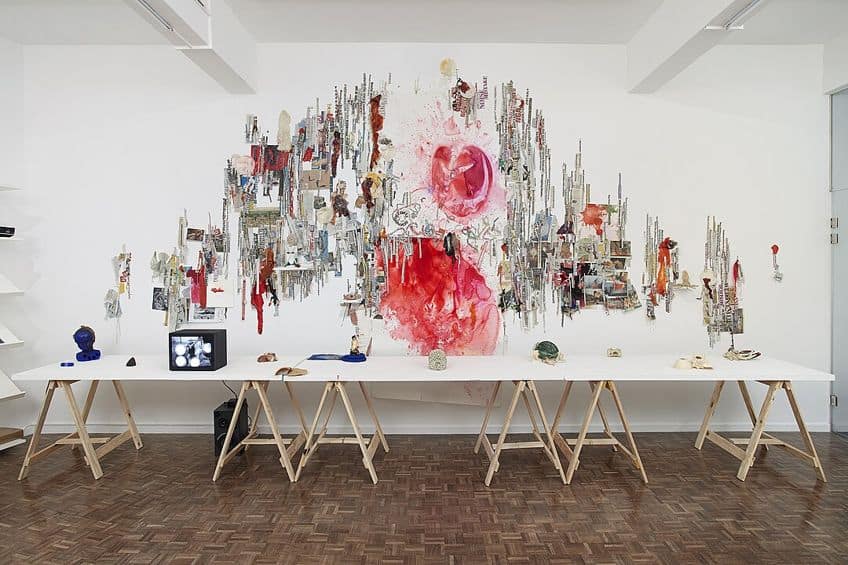
The distinction lies in the tangible and tactile nature of mixed media, where artists revel in the physicality of their creations. Now, let’s embark on a journey through the captivating realm of mixed media art by delving into the inspiring works of ten renowned artists who have mastered the art of blending disparate elements into cohesive and mesmerizing compositions. These visionaries, each with a distinct approach and aesthetic, invite us to witness the transformative power of creativity as they push the boundaries of conventional artistic expression.
Pablo Picasso (1881 – 1973)
| Date of Birth | 25 October 1881 |
| Date of Death | 8 April 1973 |
| Place of Birth | Málaga, Spain |
| Nationality | Spanish |
| Art Movement | Cubism, Surrealism, Expressionism, and Post-Impressionism |
| Mediums Used | Painting, drawing, sculpture, ceramics, printmaking, and collage |
| Famous Mixed Media Artworks |
|
Pablo Picasso, a revolutionary force in the world of art, needs little introduction as one of the most influential figures of the 20th century. Born in 1881 in Spain, Picasso’s artistic journey traversed a multitude of styles and movements, but it is perhaps his groundbreaking contributions to Cubism that have left an indelible mark on the art world. Picasso’s mastery extended beyond traditional painting, embracing mixed media techniques that added layers of complexity to his works.
In his exploration of Cubism, Picasso employed mixed media to deconstruct and reconstruct reality, a hallmark of the movement.
His cubist collages, in particular, revealed a groundbreaking approach to composition. By incorporating materials such as newspapers, sheet music, and fabric into his paintings, Picasso introduced an innovative dimensionality that transcended the flatness of traditional canvases. This method allowed him to create a visual language that shattered conventional perspectives, presenting multiple viewpoints simultaneously and challenging the viewer to engage with art in an entirely new way.
One of Picasso’s iconic mixed media artworks that exemplifies his Cubist experimentation is Still Life with Chair Caning (1912). In this piece, Picasso included a piece of oilcloth with a chair-caning design, combining it with painted elements to create a groundbreaking composition. The juxtaposition of the flat, everyday object with the illusionistic painted elements challenged the boundaries of two-dimensional art, offering a glimpse into Picasso’s relentless quest to push artistic conventions. Still Life with Chair Caning stands as a testament to Picasso’s innovative spirit and enduring legacy, showcasing the power of mixed media in reshaping the trajectory of modern art.

Georges Braque (1882 – 1963)
| Date of Birth | 13 May 1882 |
| Date of Death | 31 August 1963 |
| Place of Birth | Argenteuil, France |
| Nationality | French |
| Art Movement | Cubism, Modern art, Fauvism, and Analytical Cubism |
| Mediums Used | Painting, drawing, collage, and printmaking |
| Famous Mixed Media Artworks |
|
Georges Braque, a luminary of the Cubist movement, was born on May 13, 1882, in Argenteuil, France, and left an indelible mark on the trajectory of modern art. Alongside Pablo Picasso, Braque co-pioneered Cubism, a revolutionary artistic movement that sought to deconstruct and reimagine the conventional representation of space and form. Braque’s profound exploration of mixed media in his cubist collages and paintings played a pivotal role in shaping the movement.
In his pursuit of Cubist expression, Braque embraced the use of mixed media to dismantle the boundaries between the tangible and the illusionistic.
His innovative collages often incorporated everyday materials, such as newspapers, sheet music, and wallpaper, seamlessly merging the realms of fine art and ordinary life. The juxtaposition of disparate elements allowed Braque to fracture and reconstruct reality in ways that challenged traditional perspectives, inviting viewers to engage with the multidimensional nature of his work.
One of Braque’s notable mixed media artworks is Violin and Candlestick (1910). In this piece, Braque employed a range of materials, including oil paint, charcoal, and faux bois wallpaper, to construct a fragmented yet harmonious composition. The violin and candlestick, central motifs in the composition, are deconstructed into geometric planes and shapes, showcasing Braque’s mastery of redefining visual language. Violin and Candlestick exemplifies Braque’s innovative use of mixed media, demonstrating his ability to transform mundane elements into a profound exploration of perception and representation within the realm of Cubist art.
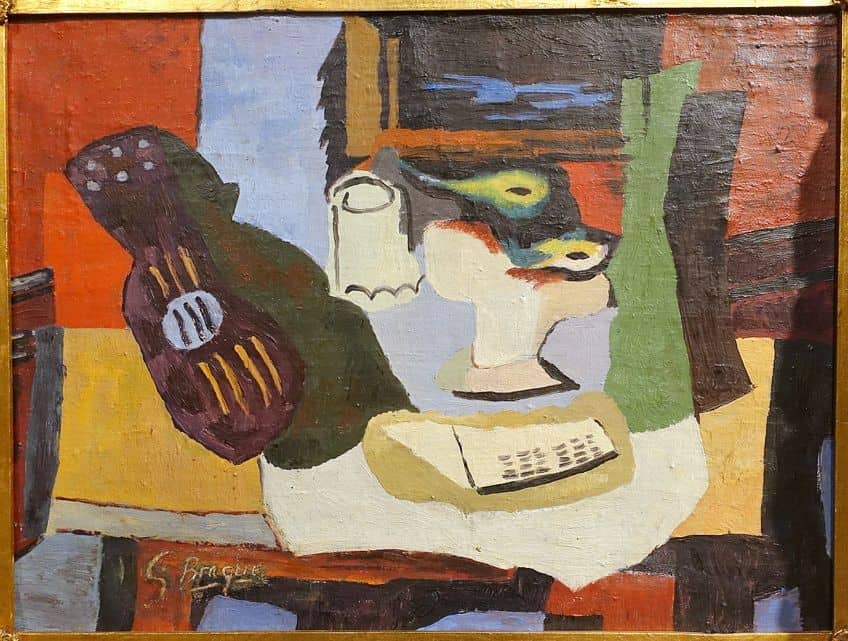
Joseph Cornell (1903 – 1972)
| Date of Birth | 24 December 1903 |
| Date of Death | 29 December 1972 |
| Place of Birth | Nyack, New York, United States |
| Nationality | American |
| Art Movement | Surrealism and Assemblage art |
| Mediums Used | Mixed Media and Assemblage |
| Famous Mixed Media Artworks |
|
Joseph Cornell, an American artist born in Nyack, New York, in 1903, is celebrated for his pioneering contributions to assemblage art and his distinctive use of mixed media. Cornell’s artistic practice revolves around the meticulous arrangement of found objects and ephemera within small, glass-fronted boxes, often creating enigmatic and poetic miniature worlds. His innovative approach to mixed media reflects a profound exploration of memory, nostalgia, and the surreal.
One of Cornell’s iconic mixed media artworks is Untitled (Soap Bubble Set) (1936-1937), an exquisite box construction that encapsulates his unique artistic vision.
In this piece, Cornell combines elements such as a soap bubble pipe, celestial charts, and a glass ampoule, creating a dreamlike composition that transcends the boundaries of time and space. The delicate balance between tangible objects and ephemeral elements in Untitled (Soap Bubble Set) exemplifies Cornell’s mastery in weaving intricate narratives through the assemblage of disparate materials.
Anselm Kiefer (1945 – Present)
| Date of Birth | 8 March 1945 |
| Age | 78 years old |
| Place of Birth | Donaueschingen, Germany |
| Nationality | German |
| Art Movement | Neo-Expressionism and Contemporary art |
| Mediums Used | Painting, sculpture, and Mixed Media |
| Famous Mixed Media Artworks | ● Margarete (1981) ● Die Milchstrasse (The Milky Way) (1985 – 1987) ● Palmsonntag (Palm Sunday) (2006) |
Anselm Kiefer, a preeminent German artist born on March 8, 1945, in Donaueschingen, has emerged as a visionary force in contemporary art. Renowned for his monumental and emotionally charged works, Kiefer’s artistic practice transcends conventional boundaries, navigating the complex terrain of history, mythology, and existentialism. Through a distinctive blend of diverse mediums, including painting, sculpture, and mixed media, Kiefer creates immersive landscapes that invite profound contemplation.
One of his renowned mixed media artworks is Die Milchstrasse (The Milky Way) (1985-1987), a monumental piece that exemplifies Kiefer’s intricate layering of materials.
Combining lead, oil paint, emulsion, and straw, the artist constructs a sprawling cosmic landscape on a massive canvas. This work not only showcases Kiefer’s technical prowess but also engages with weighty themes, drawing inspiration from cosmology, the poeticism of the Milky Way, and existential questions about human existence. Kiefer’s use of mixed media serves as a metaphorical language, allowing viewers to delve into the complexities of history and the human condition. Anselm Kiefer’s oeuvre, characterized by its profound symbolism and visceral impact, has left an indelible mark on the contemporary art landscape. Through his transformative works, Kiefer asks audiences to confront the weight of history and immerse in a discussion that surpasses the limits of time and space.
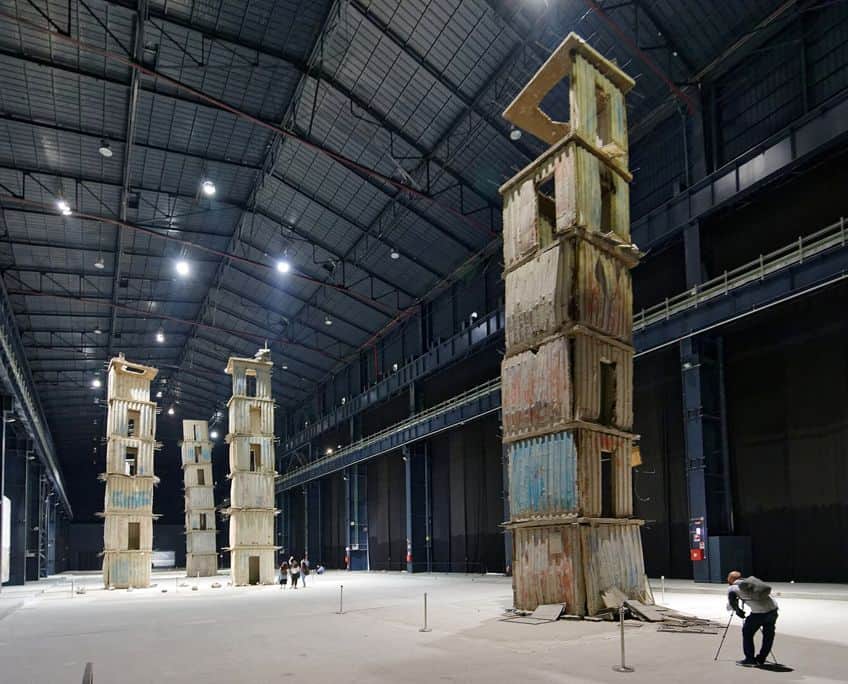
Penny Siopis (1953 – Present)
| Date of Birth | 5 February 1953 |
| Age | 70 years old |
| Place of Birth | Vryburg, South Africa |
| Nationality | South African |
| Art Movement | Contemporary art |
| Mediums Used | Mixed Media, painting, and installation |
| Famous Mixed Media Artworks |
|
Penny Siopis, a distinguished South African visual artist, is celebrated for her profound exploration of identity, memory, and the socio-political landscape through a dynamic fusion of mixed media. Born in 1953 in Vryburg, South Africa, Siopis has left an indelible mark on the contemporary art scene, employing a diverse range of materials to engage with complex themes.
Siopis’s signature use of mixed media, prominently showcased in her series “Pinky Pinky,” reflects a nuanced understanding of the power of symbolism and personal narratives. The “Pinky Pinky” series, created in the early 2000s, incorporates materials such as ink, glue, and oils, along with found objects and everyday artifacts. Siopis skillfully weaves these elements into textured, emotionally charged compositions that evoke both personal and collective histories.
One of her renowned mixed media series is Pinky Pinky (2002-2005), a striking body of work that exemplifies the essence of Siopis’s artistic practice.
In these artworks, Siopis utilizes a range of media, including ink, glue, and pigment, to construct a layered and visually compelling narrative. Pinky Pinky draws upon the South African folklore surrounding “Pinky Pinky,” a mythical creature that captures the imagination of children. Siopis transforms this folklore into a potent exploration of fear, innocence, and societal expectations, inviting viewers to delve into the complexities of cultural memory.
Penny Siopis’s ability to merge the tactile qualities of mixed media with profound conceptual depth has established her as a leading figure in contemporary South African art. Through her evocative works, she prompts viewers to reflect on the intersections of personal and collective histories, offering a poignant commentary on the human experience.
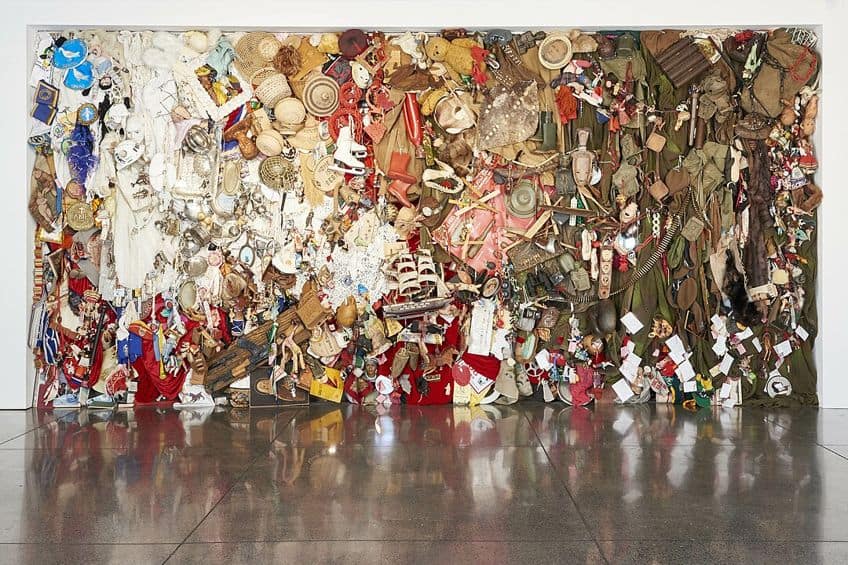
William Kentridge (1955 – Present)
| Date of Birth | 28 April 1955 |
| Age | 68 years old |
| Place of Birth | Johannesburg, South Africa |
| Nationality | South African |
| Art Movement | Contemporary art |
| Mediums Used | Drawing, animation, film, and sculpture |
| Famous Mixed Media Artworks |
|
William Kentridge, a luminary in the realm of South African visual art, is renowned for his multifaceted approach to mixed media, seamlessly blending drawing, animation, film, and sculpture. Born on April 28, 1955, in Johannesburg, Kentridge’s work serves as a poignant reflection on the socio-political landscape of South Africa, addressing themes of memory, colonialism, and apartheid. His mastery of mixed media is notably evident in his collages, where he employs a variety of materials to create visually arresting and emotionally resonant compositions.
One of Kentridge’s iconic mixed media artworks is Felix in Exile (1994), a powerful piece that combines drawing, animation, and film.
In this work, Kentridge explores the impact of apartheid on individuals and communities, using fragmented and layered imagery to convey the complexities of the South African narrative. The incorporation of torn paper, charcoal, and animated sequences contributes to the raw and textured quality of the piece, inviting viewers to engage with the profound socio-political commentary embedded within the artwork. Kentridge’s ability to seamlessly merge various mediums into cohesive and thought-provoking narratives has positioned him as a leading figure in contemporary art. Through his innovative use of mixed media, he invites audiences to ponder the complexities of history and human experience, leaving an indelible mark on the global art landscape.
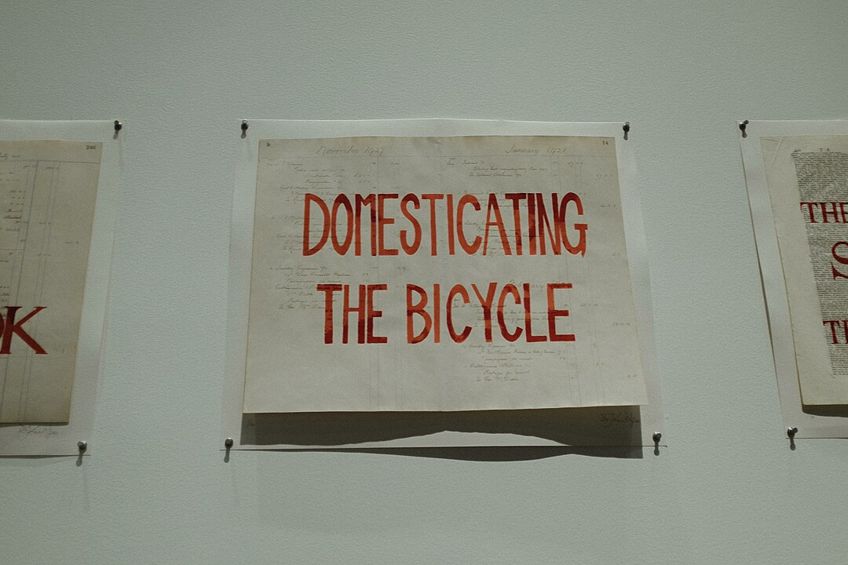
Susan Goethel Campbel (1956 – Present)
| Date of Birth | 1956 |
| Age | 67 years old |
| Place of Birth | Unknown |
| Nationality | American |
| Art Movement | Contemporary art and Book art |
| Mediums Used | Printmaking, drawing, Mixed Media, and installation |
| Famous Mixed Media Artworks |
|
Susan Goethel Campbel, an accomplished contemporary artist, illuminates the intersection of nature, technology, and human experience through her innovative use of mixed media. Born in 1962, Campbel is known for her intricate, site-specific installations that often incorporate elements of printmaking, drawing, and found objects. Her artistic practice serves as a compelling exploration of environmental concerns, offering viewers a poignant dialogue on the evolving relationship between the natural world and our technologically driven society.
In her Grand Rapids Art Museum installation, Resisting Certainty, Susan Goethel Campbell redefines horticulture by creatively utilizing inverted natural sod tiles as the foundational elements of a vast grid.
This grid intersects with three large, dark geometric planes, creating an unsettling yet captivating atmosphere that challenges our perception of space and environment. The juxtaposition of organic and synthetic elements encourages a deeper exploration of nature’s patterns, offering a rich and intuitive experience that stimulates not only the intellect but also the emotions and spirit. Campbell’s work invites viewers to a thought-provoking and spiritually satisfying encounter with the intricate relationships between the natural and the constructed.
Susan Goethel Campbel’s thought-provoking artworks invite viewers to engage in a nuanced exploration of our connection to the environment. Through her innovative use of mixed media, she challenges us to reconsider our impact on the natural world and reflects on the evolving dynamics between the organic and the artificial in our contemporary existence.
Won Ju Lim (1968 – Present)
| Date of Birth | 1968 |
| Age | 55 years old |
| Place of Birth | Seoul, South Korea |
| Nationality | South Korean |
| Art Movement | Contemporary art |
| Mediums Used | Plexiglas, acrylic, and video projections |
| Famous Mixed Media Artworks |
|
Won Ju Lim, a South Korean-born contemporary artist, has carved a distinctive niche in the art world through her innovative use of mixed media. Born in Seoul in 1968, Lim’s artistic practice spans across diverse mediums, showcasing a remarkable ability to blend traditional techniques with cutting-edge technologies. At the core of her work is a fascination with space, identity, and the transformative power of light.
In her captivating collages and installations, Lim employs a range of materials, including acrylic, Plexiglas, and video projections.
One of her notable mixed media artworks is Kiss II (2015) a stunning installation that marries physical and virtual elements. In this piece, Lim crafts an ethereal cityscape suspended within a Plexiglas structure, with light projecting through it. The projections cast dynamic and ever-changing shadows. This synthesis of traditional and contemporary materials reflects Lim’s mastery in pushing the boundaries of artistic expression.
Won Ju Lim’s unique approach to mixed media offers viewers an immersive experience, challenging perceptions of space and reality. Her capacity to seamlessly thread together various elements speaks to her creative ingenuity, establishing her as a central figure in the realm of contemporary art. Through her transformative works, Lim invites audiences to engage in a dialogue that exceeds the conventional, offering a fresh perspective on the intersections of the physical and the virtual in the ever-evolving landscape of art.
Senzeni Marasela (1977 – Present)
| Date of Birth | 11 February 1977 |
| Age | 47 years old |
| Place of Birth | Thokoza, South Africa |
| Nationality | South African |
| Art Movement | Contemporary art |
| Mediums Used | Drawing, photography, and collage |
| Famous Mixed Media Artworks |
|
Senzeni Marasela, a prominent South African visual artist, emerges as a captivating storyteller within the contemporary art scene. Born in Thokoza, South Africa, Marasela’s work is marked by a unique fusion of multimedia elements, transcending conventional boundaries to explore themes of identity, memory, and socio-political realities. Marasela’s distinctive approach to mixed media, particularly in her collages, invites viewers into a realm where personal narratives intertwine with broader cultural contexts. Through a thoughtful amalgamation of drawing, photography, and found materials, she crafts visual tales that resonate with emotional depth and societal commentary.
Her works often blur the lines between reality and symbolism, prompting introspection and dialogue on the complexities of the human experience.
One of Marasela’s notable mixed media artworks is Theodorah in Wonderland (2013). In this piece, she employs a combination of drawing and collage techniques to portray Theodorah, a character inspired by her late mother. Marasela intricately weaves together fragments of photographs, fabrics, and handwritten text, creating a rich tapestry of memories and reflections. Theodorah in Wonderland not only exemplifies Marasela’s skillful manipulation of mixed media but also serves as a poignant exploration of personal history and the interplay between individual and collective narratives. Through her art, Senzeni Marasela invites us to reconsider and reimagine the stories that shape our understanding of self and society.
Njideka Akunyili Crosby (1983 – Present)
| Date of Birth | 1983 |
| Age | 40 years old |
| Place of Birth | Enugu, Nigeria |
| Nationality | Nigerian |
| Art Movement | Contemporary art |
| Mediums Used | Painting, collage, and printmaking |
| Famous Mixed Media Artworks |
|
Njideka Akunyili Crosby, born in Enugu, Nigeria, is a contemporary artist whose transcendent work has garnered international acclaim. Renowned for her exceptional mastery of mixed media, Crosby deftly combines painting, collage, and printmaking to create intricate and evocative compositions. Her art serves as a profound exploration of identity, migration, and the complex intersection of cultures.
In her groundbreaking collages, Crosby often incorporates elements from both her Nigerian heritage and her experience as an immigrant in the United States. Notable among her famed mixed media artworks is The Beautyful Ones (2019), where she skillfully fuses oil painting with transfers of family photographs, Nigerian pop culture imagery, and Western magazine cutouts. This piece not only showcases her technical prowess but also serves as a poignant commentary on the negotiation of identity in a globalized world. Njideka Akunyili Crosby’s innovative use of mixed media establishes her as a trailblazer in contemporary art. Through her visually rich and narratively complex creations, she invites viewers to engage with the intricate layers of her personal history and the broader cultural dialogues that shape our interconnected world.
In conclusion, the realm of mixed media art unfolds as a captivating tapestry woven by the ingenious hands of mixed media artists and, more specifically, the visionary mixed media collage artists. Through their skillful integration of diverse materials, these artists breathe life into their creations, transcending the limitations of singular mediums. The dynamic interplay of texture, color, and form in the hands of mixed media artists transforms traditional artistic boundaries, inviting viewers into a world where creativity knows no constraints. As we celebrate the innovation and diversity encapsulated within the works of mixed media artists, we witness not only the evolution of artistic expression but also the enduring power of imagination to reshape the canvas of visual storytelling.
Frequently Asked Questions
Who Is the Most Famous Mixed Media Artist?
One artist widely recognized for their groundbreaking work in mixed media is Pablo Picasso. A key figure in the Cubist movement, Picasso’s innovative approach to art involved the skillful integration of various materials, including newspaper clippings, fabrics, and found objects into his paintings and sculptures. His iconic collages, such as Still Life with Chair Caning (1912), exemplify his mastery of mixed media, challenging traditional artistic conventions and influencing generations of artists. While Picasso may be considered among the most famous mixed media artists, the field is rich with diverse talents, each contributing uniquely to the evolution of this dynamic and multifaceted artistic medium.
What Are the Six Major Types of Mixed Media Art?
Mixed media art encompasses a wide array of techniques that combine different materials to create diverse and visually rich compositions. The six major types of mixed media include collage, assemblage, sculpture, altered books, digital art, and installations. Collage involves the layering and juxtaposition of various materials, such as paper, fabric, and found objects, onto a surface. Assemblage goes a step further by incorporating three-dimensional elements, often creating intricate sculptures from diverse materials. Sculpture in mixed media explores the creation of three-dimensional forms using a combination of materials like clay, metal, and textiles. Altered books involve the transformation of existing books into artistic creations through techniques like cutting, folding, and painting. Digital art in mixed media utilizes technology, blending digital elements with traditional mediums. Installations are immersive artworks that occupy physical spaces, often incorporating a mix of materials to evoke specific atmospheres or narratives. Together, these major types showcase the versatility and boundless creativity inherent in mixed media art.
Nicolene Burger is a South African multi-media artist, working primarily in oil paint and performance art. She received her BA (Visual Arts) from Stellenbosch University in 2017. In 2018, Burger showed in Masan, South Korea as part of the Rhizome Artist Residency. She was selected to take part in the 2019 ICA Live Art Workshop, receiving training from art experts all around the world. In 2019 Burger opened her first solo exhibition of paintings titled, Painted Mantras, at GUS Gallery and facilitated a group collaboration project titled, Take Flight, selected to be part of Infecting the City Live Art Festival. At the moment, Nicolene is completing a practice-based master’s degree in Theatre and Performance at the University of Cape Town.
In 2020, Nicolene created a series of ZOOM performances with Lumkile Mzayiya called, Evoked?. These performances led her to create exclusive performances from her home in 2021 to accommodate the mid-pandemic audience. She also started focusing more on the sustainability of creative practices in the last 3 years and now offers creative coaching sessions to artists of all kinds. By sharing what she has learned from a 10-year practice, Burger hopes to relay more directly the sense of vulnerability with which she makes art and the core belief to her practice: Art is an immensely important and powerful bridge of communication that can offer understanding, healing and connection.
Nicolene writes our blog posts on art history with an emphasis on renowned artists and contemporary art. She also writes in the field of art industry. Her extensive artistic background and her studies in Fine and Studio Arts contribute to her expertise in the field.
Learn more about Nicolene Burger and the Art in Context Team.
Cite this Article
Nicolene, Burger, “Mixed Media Artists – A Testament to Boundless Creativity.” Art in Context. February 5, 2024. URL: https://artincontext.org/mixed-media-artists/
Burger, N. (2024, 5 February). Mixed Media Artists – A Testament to Boundless Creativity. Art in Context. https://artincontext.org/mixed-media-artists/
Burger, Nicolene. “Mixed Media Artists – A Testament to Boundless Creativity.” Art in Context, February 5, 2024. https://artincontext.org/mixed-media-artists/.



